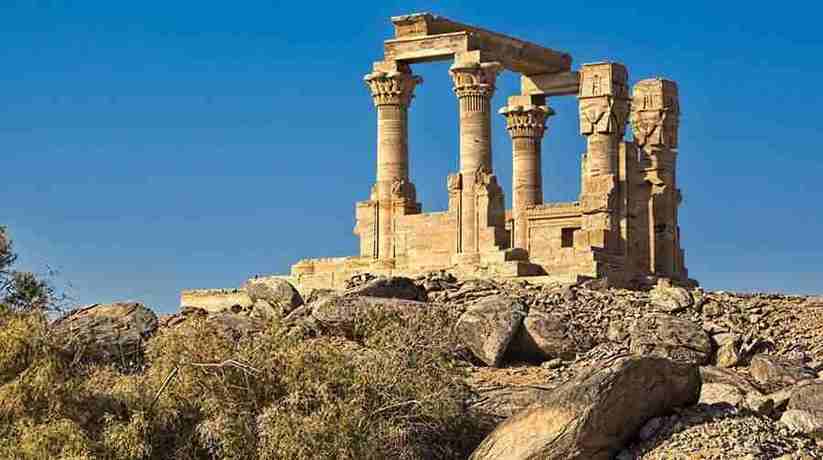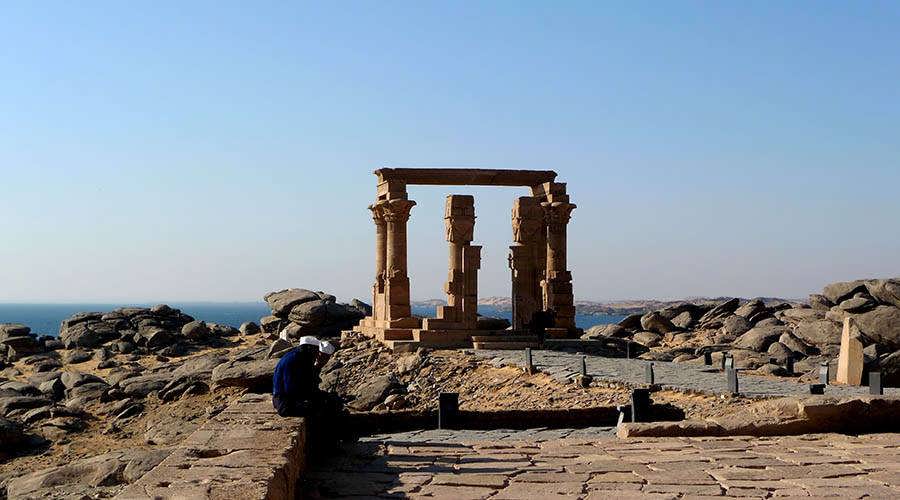Kiosk of Qertassi Aswan Egypt tours, prices, booking, reviews
Kiosk of Qertassi Aswan Egypt is a tiny Roman kiosk which located south Kalabsha temple. In fact, the Kiosk of Qertassi Aswan has four slender papyrus columns inside. It also has two Hathor columns at the entrance. In fact, the Kiosk is a small but indeed elegant. The structure unfinished and not inscribed with the name of the architect. It probably is contemporary with Trajan’s Kiosk at Philae. The Kiosk dates back to the Augustan or early Roman period. In fact, the structure is only twenty-five feet square, and consists of a single Hathor court. It oriented north or south and surrounded by fourteen columns connected by screen walls. Of the 14 pillars, only 6 have survived in place. Furthermore, the pillars or columns made of brown sandstone.
More details about The Kiosk of Qertassi Aswan Egypt:
The structure itself perhaps connected to a small temple on the East Bank of the Nile. It was in existence in 1813. This charming kiosk now moved to the site of New Kalabsha in Southern Egypt. In fact, it once stood to the entrance to the sandstone quarries of Qertassi. Its capitals decorated with Hathor heads. It is to honor the goddess who was the patron of quarry-men and miners. In fact, Hathor often associated with Isis, as she is at Philae. As a result, the Kiosk of Qertassi Aswan, small temples of Dabod and Dendur were way stations.
They were way stations on the processional route which taken by priests. The priests bear the image of Isis around Lower Nubia which held to be her estate. The Kiosk roof constructed with sandstone slabs. It was due to the paucity of timber in the arid region of Nubia. In fact, the sandstone slabs supported by architraves on its long sides.
















